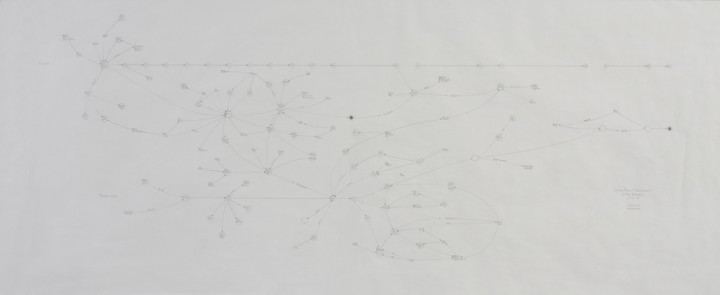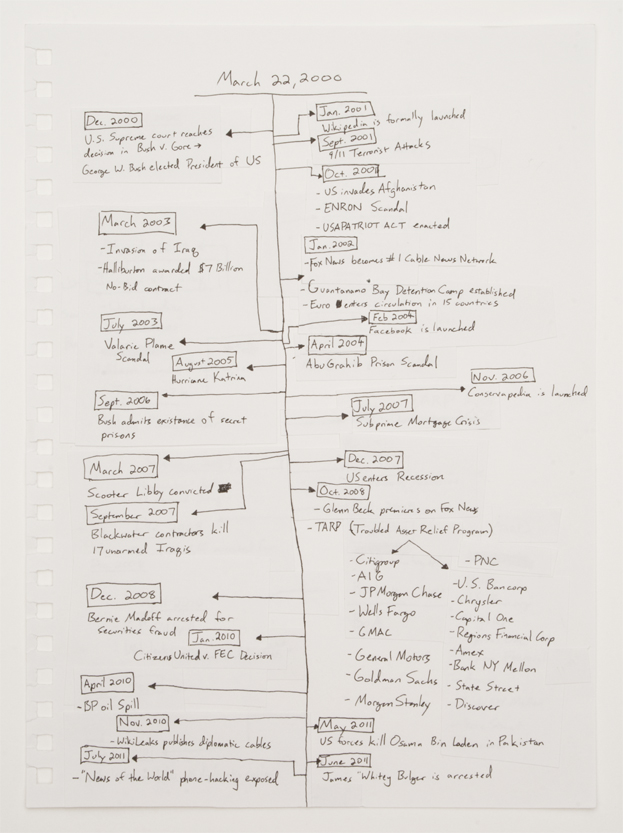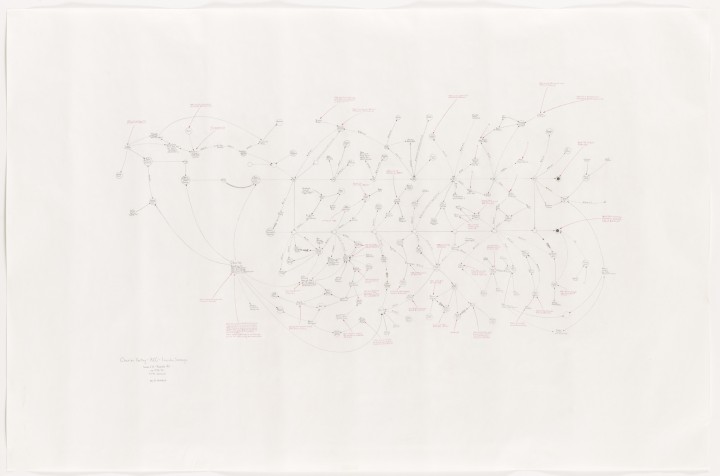
Mark Lombardi called himself a storyteller. In Casino Resort Development in the Bahamas c. 1955-89 (Fourth Version), from 1995, Lombardi draws the connections between such diverse players as Meyer Lansky, Air America, Howard Hughes, Richard Nixon, and a myriad of dubious banks. These connections could be dismissed as conjecture or, worse, as misinformation. However, this chart describes the flow of capital between entities, which serves as a verifiable indictment of association and occasional corruption.
In dying on March 22, 2000, Mark Lombardi missed his decade. He missed the confusion and manipulation of that year’s presidential election, the panic and distortion of the September 11th attacks and the ensuing wars, and the incomprehensible web of the subprime mortgage crisis. Any one of these events could have kept Lombardi busy for the rest of his career. Perhaps most relevant to Lombardi would have been the ruling of the 2010 Supreme Court case, Citizens United v. the Federal Election Commission, which found that corporations, like people, are able to make anonymous political campaign contributions because money qualifies as a form of free speech. This decision is the conceptual inversion of a Lombardi drawing; not only is the flow of money unseen, but contributors–be they people or corporate entities–are legally indistinguishable.

I initially began making a chart of the Post-Lombardi Era for my own edification. I had to keep revising and reorganizing the chart to incorporate more events as they were remembered. Some events even occurred during the making of the chart (the News Corp phone-hacking scandal was particularly apropos). Unsurprisingly, my chart began to resemble Lombardi’s own work. I even had to ignore the instinctive impulse to connect the events with the people and organizations that were relevant. But the appeal was clear: the clean lines and text provide a cogent way to quickly grasp these dizzying narratives.

Lombardi’s work allows us to observe a confusing and unseen world. His drawings depict a genealogy of influence, in which the connections denote not bloodlines, but rather the movement of capital. Each allegiance is not familial, but rather is a mutually beneficial partnership, the aim of which is to acquire and retain power. Lombardi depicts these networks as enclosed and self-reflexive, giving both artist and viewer the impression of being an independent observer. We appear to be on the outside looking in, belatedly trying to sort out this complicated network. But by viewing the drawing, we, as well as Lombardi, become entangled. Our desire for knowledge burdens us with liability. We are now embedded in the network; we have become accomplices after the fact.
Mark Lombardi Biography